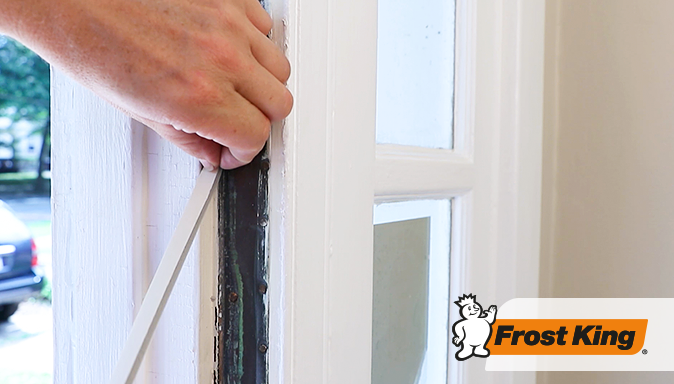Summertime, and the living is… buggy? If creepy crawlies are summering in your home and yard this season, we’ve got 9 ways you can stop bugs from bugging you. And the best part? If you’re trying to avoid exposure to toxic chemicals, our solutions are all 100% chemical free.
1. Seal Doors and Windows. Let’s start with the obvious – keep doors closed to keep bugs out. Next, check for gaps around doors and windows that provide pests with easy access to your home. Look for gaps around the perimeter of exterior doors and windows and seal them with caulk or weatherstripping, and install a door sweep and threshold to keep pesky pets from sneaking in through the gap under doors.
2. Check Screens. Again, the obvious: before you open any windows, make sure screens are in place and they are free of rips or tears that can let bugs in. If screens are torn, repair small holes with our Screen Patches. If you’re missing screens, pick up a WB Marvin Adjustable Window Screen, which come in a variety of sizes to fit almost any window.
3. Fix Cracks. Holes and cracks are like a “welcome” mat for bugs, so seal them up. Check around the foundation, especially in areas where pipes enter the house. Stuff cracks with steel wool, then patch with caulk. Larger cracks can be filled with our Caulk Saver, which reduces the amount of expensive caulk you need to seal large openings.
4. Reduce Moisture. Bugs love water, so check for leaks and damp areas, especially in the basement and under sinks, and inspect the caulking around tubs and showers for small holes that might be seeping water. Keep humidity levels in check by running a dehumidifier.
5. Put Pet Food Away. Is your cat or dog’s food area a source of food for unwelcome guests? Place pet’s food bowls on a rubber mat instead of directly on the floor, sweep up any spilled food, and be sure to put food away when your pets are done eating.
6. Clean Up the Yard. If you want bugs to stay out of your home, discourage them from living in your yard. Eliminate places for bugs to hide by cleaning up fallen tree branches, trimming back shrubs, and raking up grass clippings and leaves, especially near your home’s foundation. Keep grass cut to 2-1/2” to 3”, store firewood 20 feet or more from your home, and if you have a compost pile, make sure to keep it covered with a tight-fitting lid.
7. Eliminate Standing Water. Mosquito larvae need standing water to develop—and they don’t need much! Mosquitos can lay their eggs in as little as a bottlecap full of water. Check around your yard for standing water sources, like trashcan lids, flower pot saucers and grill covers and dump accumulated water, fill in low areas in your lawn where water puddles, and empty and clean bird baths two to three times a week. One often overlooked area where standing water accumulates is gutters. Clean out your gutters and keep debris from clogging them up again with Frost King’s Snap-in Gutter Screens, which snap into place easily and hold securely. Mosquitos are weak fliers so simply running a fan can circulate the air and deter these pesky bugs from attacking you when you’re outside.
8. Plant Bug-Repelling Plants. Pick plants with a purpose! Add a few plants that can help keep bugs at bay around your outdoor sitting area. Plants that are natural bug repellents include:
• Citronella grass
• Rosemary
• Mint
• Basil
• Lemongrass
• Nasturtiums
• Petunias
• Lavender
9. Encourage Natural Predators. Mother Nature is your best ally in the battle against bugs. Insects are the main source of food for many birds and bats, so make these natural predators welcome in your yard. Encourage birds by planting trees and bushes for them to hide and nest in, provide fresh water (but change it often – see tip #7!), and hang a birdfeeder. Bats devour as many as 600 insects per hour, and they’re not discriminating: they’ll eat mosquitos, moths, beetles, crickets and other bugs. Hang a bat house to provide bats with a safe roosting habitat so they’ll start dining on the buffet of night-flying insects in your yard.
